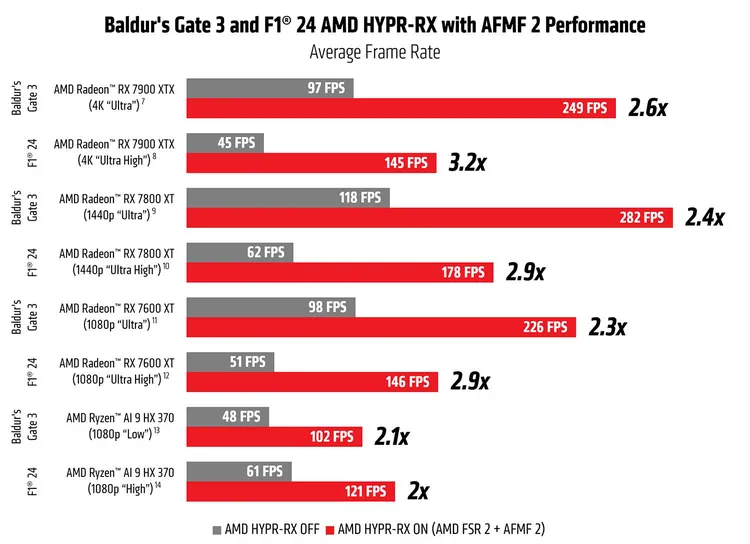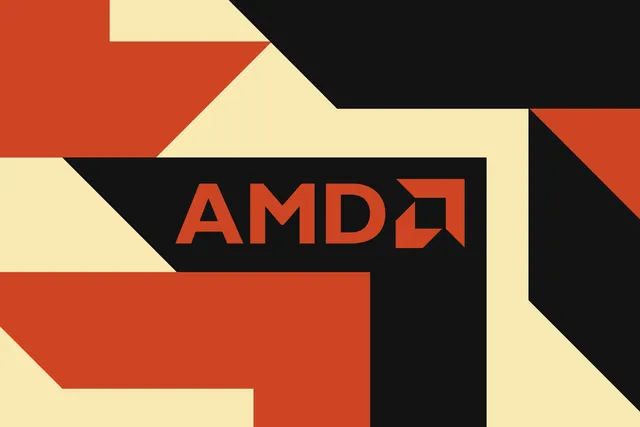Fluid Motion Frames 2 can improve framerates in games that don’t support DLSS or FSR.
AMD has officially rolled out the next generation of its Fluid Motion Frames technology, designed to supercharge gaming performance on RDNA 2- and RDNA 3-based GPUs. Following a successful technical preview earlier this year, Fluid Motion Frames 2 (AFMF 2) is now widely available to gamers, released in conjunction with the new Adrenalin 24.9.1 GPU driver update. This exciting development promises a significant FPS boost across a wide range of titles.
What is Fluid Motion Frames 2?
AFMF is AMD’s frame-generation technology, comparable to Nvidia’s DLSS Frame Generation. However, unlike Nvidia’s solution, which requires game-specific integration, AFMF operates at the driver level, making it more versatile across different games. With the second-gen update, AFMF 2 now supports games running on OpenGL, Vulkan, DirectX 11, and DirectX 12, extending its FPS-boosting capabilities to titles that don’t natively support AMD’s FidelityFX Super Resolution (FSR) or Nvidia’s DLSS.

Expanding Compatibility and Performance
One of the most exciting aspects of AFMF 2 is its broad compatibility. It’s not just limited to AMD’s latest hardware—it works with a wide range of GPUs, including Radeon RX 6000, RX 7000, and mobile Radeon 700M and 800M graphics cards. This opens up the tech to a large number of gamers eager to squeeze more performance out of their systems.
According to AMD, AFMF 2 can improve framerates by as much as 250 percent on average when combined with FSR 2 and AMD’s Hypr-RX optimization suite. However, real-world performance will vary depending on factors like the specific GPU, game, and resolution. Digital Foundry’s testing of the AFMF 2 beta revealed impressive gains, with FPS boosts typically “in the 2x range” in demanding titles such as Control, Cyberpunk 2077, and Senua’s Saga: Hellblade II, all running at 4K resolution on a Radeon RX 7900 GRE GPU.
Tackling Fast-Motion Gaming
AFMF 2 also addresses a significant limitation found in the original version: the inability to handle fast-moving scenes effectively. In the previous iteration, Frame Generation would often be disabled during rapid motion, diminishing the overall experience. AFMF 2 solves this problem with new fast-motion optimizations, ensuring smooth and consistent frame generation even during the most intense gameplay moments.
User Customization with AI-Optimized Modes
To give users more control over how AFMF 2 impacts their gaming experience, AMD has introduced two AI-optimized, adjustable modes.
- Search Mode: This mode fine-tunes frame smoothness and image quality during fast-motion scenes, striking a balance between performance and visual fidelity.
- Performance Mode: Ideal for low-power devices, this mode enhances AFMF efficiency, delivering significant FPS boosts without taxing system resources.
These options allow gamers to tailor their experience, ensuring AFMF 2 works optimally for their specific setup and preferences.
Additional Enhancements and Features
The update brings further improvements for AMD’s latest GPUs. Gamers using Radeon RX 7000 graphics cards will benefit from AFMF 2’s support for borderless fullscreen modes, offering more flexibility in how they play. Additionally, the update integrates Radeon Chill, AMD’s low-latency FPS cap technology, which helps reduce input lag—often a downside of FPS-boosting solutions—providing a more responsive gaming experience.
But AFMF 2 isn’t just for gamers. Outside of gaming, the update introduces a new “geometric downscaling” feature for video playback, which reduces aliasing and other visual artifacts when playing videos in windows smaller than their native resolution. This feature is available in DirectX 11 apps running on Radeon RX 7000 and integrated Radeon 800M GPUs.
What’s Next for AMD?
With AFMF 2 now available to a broader audience, AMD continues to refine its gaming technologies to enhance the performance of its graphics cards. The combination of frame generation, FSR 2, and Hypr-RX is a potent trio, pushing gaming into new levels of smoothness and immersion.
For gamers looking to maximize the performance of their Radeon GPUs, AFMF 2 represents a significant leap forward. With expanded game compatibility, improved fast-motion handling, and user-controlled AI optimizations, AMD is delivering a powerful, flexible tool that caters to a wide range of gaming setups and playstyles.
The future of gaming just got a whole lot smoother.










